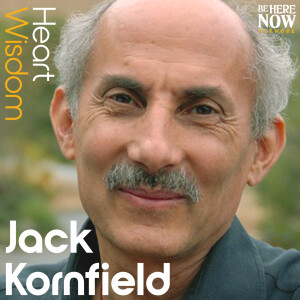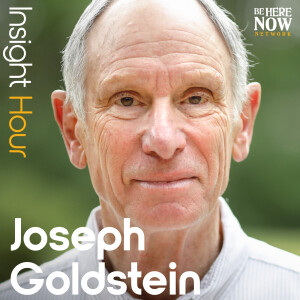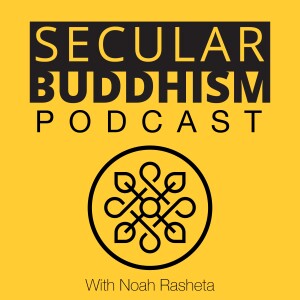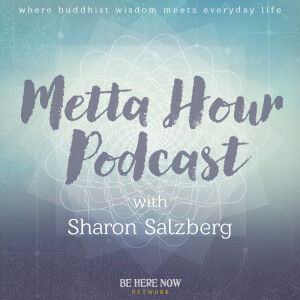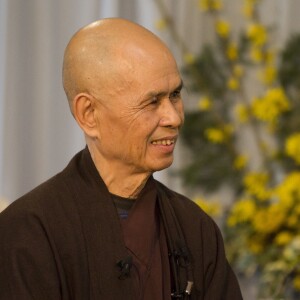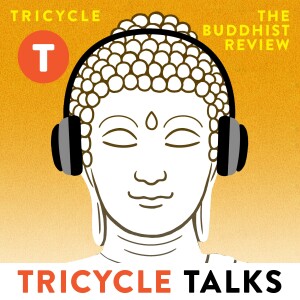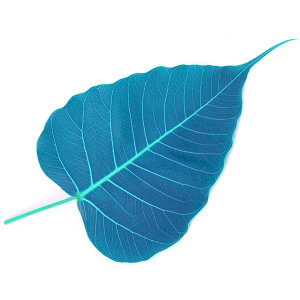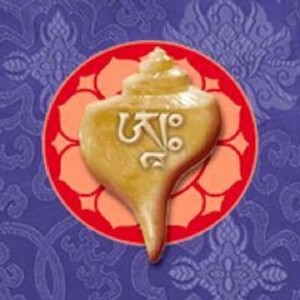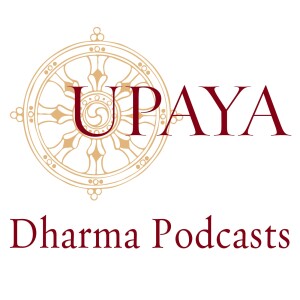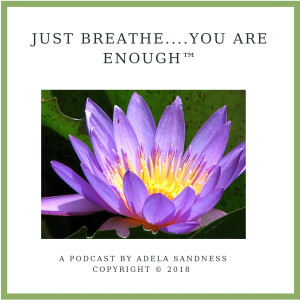

Just Breathe....You Are Enough
https://justbreatheyouareenough.libsyn.com/rssEpisode List

038 - Touching Joy
Touching Joy There are many contemplative traditions that emphasize the importance of balance. First Nations traditions - in reference to the Medicine Wheel - will speak of balance, the balance, for example, of the emotional, physical, spiritual, and intellectual aspects of ourselves. Many First Nations traditions will hold that, by bringing these aspects into balance, we become a balanced, whole, harmonious person. Chinese traditions, historically, have also had strong influence in our understanding of balance. The symbol of the yin yang is, at least in part, about the balance of opposing principles. The inner and the outer, the black and the white, where there is white inside the black and black inside the white. By coming together in a balanced way, often our parts are understood to become a whole. The ancient Indian tradition, from which Hindu and Buddhist traditions arise - the origin of Indian understandings of enlightenment – sees harmony and wholeness in a slightly different way. We are part of a whole. We will be whole to the degree that we connect to that wholeness of which we are apart. The means to connect to that wholeness is not so much a question of balance as it is a question of alignment. Our inside world and the outside world is composed of many composite elements. Our well-being depends, they would say, on those composite elements coming into alignment. In this view, there is an organic alignment of things. Humans are connected to a cosmic whole: the inner world of the body and the individual person can only mirror this much larger flow. It is similar to the Chinese understanding of the Ta0. There is a way of things, an ordered and sequenced flow of things. For my students, I illustrate this idea by telling a simple creation story which outlines this view. Once upon a time, there was a golden egg. It floated on an ocean that existed in the time before time. This ocean has always existed: it will always exist. There is nowhere for it to go. The golden egg floated…and it moved. It opened…and the top became the sky, the bottom became the earth, and the space in between became the atmospheric realm in which we all live. The ocean is life itself. Although it would be perceived and articulated differently as Buddhist and Hindu traditions would develop each in their own way, both traditions would begin - in the time period between about 1500 and 500 B.C.E. - with a view that says: there is life itself which pervades everything. It is just like water: the water in our bodies, the water in my teacup, the water in the rivers, and the streams, in the oceans of the earth, in the ocean that is the sky (for if it were not an ocean, it would not be blue! If it were not an ocean where it could rain come from!) There is this quality of the mirror, a reflection. Life is just life. Water is just water. It will take different forms, and different shapes, in different places or different times, perhaps a bit in the way that water is liquid, or solid, or steam. Yet life is just life. It is present with us. We don't earn it. There is no question of deserving. It just is, in the way that oxygen in our atmosphere is. We are enough. Life is just life. Will we vibrate with it - celebrate with it - be fed by it as if connecting to an electrical current, or will we somehow come to feel cut off, or atrophied and desiccate . We are parts of a whole. We will feel whole to the degree that we connect to that wholeness of which we are apart. At its most basic, the old Indian worldview is a tripartite system: heaven, and Earth, and the space in between, where the opposing poles of anything serves simply to define – to help us to see - that space in between in which we all live. Watch a sunrise or a sunset, and notice. Because of the opposing poles of heaven and earth, we are able to see this space which is everywhere, inside and outside the world of form. The hand, or the body, or the stars under an electron microscope will show itself to be 99.999% space, the space inside of us and outside of us in which we live. It is as omnipresent as water. This space is life itself. We are able to see it when it is defined by this structure of colour and shape and form, because of the limits of earth and sky. We can see the room that is created as a result of the structure of the walls. The one is dependent on the other. In some counts of the system, heaven, Earth and the space in between are each understood to have their own top and bottom and space in between. So the vision of the world by that count has seven elements. The bottom, the middle, the top of the earth, which is the bottom for the middle and the top of the atmosphere, that is the bottom for the middle and the top of the sky. It is like a three-story apartment building: it has seven parts. It wasn't just seven elements, though. It was eight, because the wholeness which was the entirety of this composite group of seven was also considered to be an element. So eight would become, an ancient India, the number of wholeness representing a cosmic infinity. 108, 1008, 100,0008: eight would come to symbolically represent the entirety of the cosmic whole of which we are apart. The part and the whole would be a fascination for much of ancient Indian ritual and philosophy. We have wholeness because of a seemingly infinite series of elements that somehow all seem to line up and come into place: the ordered succession of the seasons, the ordered movement of the planets and the stars, the ordered unfolding of the generations one after the next. Like the individual human body, it would come to be understood as a system of systems of pieces joined: the skeletal system, muscular system, circulatory system, endocrine system, the mechanism of sensory perception, of cell division, the layers of the skin. It is a system of systems of pieces joined. For me, among the most easy to visualize is the spinal column: a system of systems of pieces joined. There is fluidity of movement because of the precise alignment of these composite parts. One small piece slightly out of place and the movement becomes obstructed, the body loses its flow. Life is like that. In this vision of the ancient Indian world - with its pictorial description of enlightenment - we relate to our lives like the bones of a spinal column. It is a system of systems of pieces joined. When these pieces relax into place, there is a flow of movement that happens without obstruction. This alignment - as a real for the individual, as for the social, the natural and cosmic whole - was named with an ancient Sanskrit word “rta”. It is a vocalic “r”, rolled a bit like the Scottish or Gaelic “r”. How this vision, or idea, becomes rendered into European languages varies with the cultural lenses that have sought to understand it each in their own way. German Indologists have tended to render it as “truth”. Trained in Paris, it is perhaps my cultural bias to appreciate the French understanding of one of the tradition’s early female Indologists, Lillian Silburn, who described it as “agencement exact”, the harmonious alignment of things, like the movement of the spheres, the movement of the stars and the movement of the spine. “Agencement exact”, an alignment that is “juste”, or “true”, in the way that an arrow flies “true”, without obstruction: when our pieces come into place, we experience wholeness, we feel the flow of things. “The flow of things” is how the ancient poets saw it in 1500 BCE, like a golden river in the sky. It was the union and transcendence of water and fire, the union and transcendence of masculine and feminine principles, the experience of the enlightened mind. This golden flow of things pervades life itself; it is life itself. We, as individuals, come and go: the sun, and the sky, and the ocean remain. It is in us. It is of us. We do not possess it. We live our life; we do not own it. The central story in the oldest Sanskrit text of the Indian sub-continent describes how to remove obstacles to this flow. The great hero, whose name is Indra, wields the thunderbolt and kills the dragon whose name means literally “obstacle”. We become the hero ,in the story of our lives, to the degree that we wield our thunderbolts and overcome our obstacles. It is the prototype - the origin story - for both Hindu and Buddhist understandings of enlightenment. Obstacles to what? The hero wields the thunderbolt and destroys - or overcomes - obstacles to the flow of things. The sequential unfolding of time, the in-breath and the out-breath, the expanding and contracting of the heartbeat: our lives are a system of systems of pieces joined. When the parts of our lives come into alignment, we taste the flow that is joy. This self-existing flow, the life principle, is always there. It cannot go anywhere. We may be born and die: life itself remains. In the same way, our health and vigor, our vitality and joy, our inspiration: it cannot go anywhere. It is like the sun in the sky. We may see it or not: this is irrelevant. It is the Earth that turns: the Sun remains. The sun doesn't go anywhere. There is nowhere for it to go. Our joy is like that. It is self-existing, inherently enough. We may connect with it or not, as we work with the obstacles that show themselves in the course of our days. If you are feeling cut off from your joy, consider the possibility: is there something here - in my life, in the unfolding of my world - which has somehow come out of alignment? Is there an obstruction that somehow needs to be overcome in order that I can reconnect with my delight? Do I need to pick up my thunderbolt to cut through an obstacle? Or is there some other adjustment – a re-alignment of my wheels - that needs to take place? The joy is self-existing. We either cut ourselves off from it or not. When our parts come into alignment, we connect with the flow and touch joy. The quality of the relationship that you have with the outside world directly relates to the quality of relationship you have with yourself. Come see us at “justbreatheyouareenough.com” and join the JBYAE community. I'm Adela, and you've been listening to Just Breathe....You Are Enough™. You can follow us on Instagram, Facebook and Twitter. If you haven't yet, please subscribe, rate and review this podcast. Join us next time, and thank you for listening. Copyright © 2019, Adela Sandness

037 - Roll in the Sand
Roll in the Sand As some of you know, this week was moving week on the university campus where I teach. Extensive renovations in one of our main office buildings meant that we moved out of that office building into temporary housing for about one year's time. They stripped that office building down to its bricks to do a major renovation. This week we, and our countless boxes, moved into the completed new building. While I was unpacking one of those boxes, I came across an envelope of photographs that had gotten lost at the back of a filing cabinet about 10 years ago. It contained one of the best photographs that I have of Sarah The Wonder Dog, my magnificent golden retriever who died just over three years ago. In the photo, Sarah – as a two year old – is sitting on the beach, at sunset, chewing on her stick. Where else would she be? And what else would she be doing there? Of course she is on the beach chewing her stick. The beach in that photograph is about a 15 minute drive away from the beach where she had her last big play before she died at the age of 13. It was a miraculous Christmas day here on the East Coast of Canada where - very oddly - the snow had melted, and the sun was warm, and the weather tasted of spring. As a Christmas present to both of us, Sarah and I went to her favourite beach. It was a very flat beach, that we could access from very close to the car: at the age of 13, she could no longer climb over rocks or walk up steep hills. This was a very flat beach, with very shallow water, and it was possible to walk on a flat surface for quite a long distance. We walked for about a half hour. It felt like a long time, because at home – with her sore hips – we would walk about two blocks before it was time to head back. On one side of the beach was the ocean with its waves and the pull of the tide. She knew that she wasn't strong enough to be in the pull of that tide, but she realized that on the other side - maybe some hundred metres away - there was an inland lake without tide, and she had even managed to get a little bit wet in that water. We were both so delighted by the treat of this! We had finished our walk on the beach, and we were heading back to the car, when suddenly there arrived a Christmas miracle: three dogs and their humans, all six of them visiting from away, came out of a car. There was a big, black and fluffy, very friendly and lovely, Newfoundland dog. There was a smaller dog who had been hit by a car and recovered with some difficulty. So this dog also knew what it was to have to struggle a bit in order to play on the beach. Then there was a blond, gentleman dog, a golden retriever just like her, an elegant noble gentleman dog slightly larger than herself who was wise enough to understand her perfectly. In all of her years, I had never seen her look at another dog with such love. It was as if this Christmas day on the beach – the last big play of her life - had been predestined for many lifetimes before and dreamed of in many dog dreams. The humans who belong to these dogs knew what it was to work with a pack and how to play in a way that included everyone. They had helped the smaller dog heal from the car accident. So they knew how to include in the play someone who moved more slowly than the others. Sarah was so happy when she encountered these dogs that she immediately lay down on her back and began to make snow angels in the sand, wiggling back and forth with such joy - paws flailing in the air - and all of us, the three dogs, the three humans and me, stood around in a circle watching her as she made a full 360 Dog Angel in the sand. She was ecstatic. Then it came time to play with the stick on the beach. Now the younger dogs, they could run far and fast to fetch that stick, and if the stick went into the water they could swim against the current in the ocean in order to bring back that stick. Sarah understood this, and you could see that she was both engaging the play but also holding back, tentative and feeling a little bit sad that she couldn't quite run like the others. She was happy to be with them, but also knowing that she wasn't quite a part of it, until - in a moment of genius - one of the other humans did a fake throw of the stick, pretending to throw the stick far into the water. All of the other dogs ran madly after the fake throw of the stick, but the humans showed Sarah that they still had the stick, and they threw the stick right in her direction, about 18 inches away. She was able to pick up that stick. She was the one who got the stick. The others came running madly back, and she had the stick, and the miracle of this moved through her entire body. It is perhaps the happiest moment that I witnessed in her life that - even at this very end of her days -she got the stick. The other humans, and the other dogs, somehow understood the miracle of this and celebrated with her. The gentleman golden retriever - so much like Sarah that they were hard to tell apart except that he was larger - understood Sarah's situation. When the play moved into the ocean, into the pull of the tide, he would swim slightly behind her and very close to her: it was very obvious that he was taking care of her. He knew she would not be safe swimming in the ocean by herself. So he stuck by her and - because he was there - she could swim out into the waves of the ocean, and then swim back again because he would be there to help her if something went wrong. Again and again, the two of them went out into the ocean and back again. In her 13 years, I may have never seen her so consciously feeling cared for and loved by another dog. In another great moment of that miracle Christmas Day play, the gentleman golden retriever took this stick and gave it to her, in order that they could play pull the stick, in the way that dogs play the pulling game. He pulled on the stick as gently as one would feed an infant with a spoon - so unbelievably gently - in order that Sarah was able to play the pull game, but she would not be hurt by it. It was, I think, the most glorious day on the beach of her life. The day of her very last big play Sarah the Wonder Dog taught me about sticks. Action and reaction. Cause and effect. In our reflections on karma, we have observed that humans, by nature, must act. All creatures that move, by our nature, act, and when we act we must also receive the result of that action. So it is that we, too, will pick up both ends of a stick. The trick is, what we do with those sticks once we've got them? In my experience, it is an oddly short list of options. Sometimes we hit ourselves with our sticks or hit other people with our sticks. In that action and reaction, sometimes we cause harm to ourselves or to others. Some sticks are fun, and we pick them up, and we play fetch in the companionship of our pack. We pick up our sticks, and we toss them in delight. We run after them, and fetch, for the pleasure of picking them up again. Sometimes we chew on our sticks. Is there a stick that you're chewing on at the moment? Something that's eating you, that you can't quite digest? So you keep chewing on it… enough to get splinters in your jaws? If you play fetch with a dog on the beach, you may observe that – sometimes - among the hardest things is to know how to drop the stick. How do we let go? Sometimes we couldn't hold on anymore even if we wanted to. Sometimes we simply decide to drop it. Sometimes we forgive, and our end of the stick naturally falls away. Because we’re ready to forgive? Because it hurts us less to forgive than it does to keep holding on? Action and reaction. Cause and effect. We pick up both ends of the stick. Then what? Do we hit ourselves with it? Do we hurt someone else with it? Do we sit and chew on it? Do we delight in the tossing of it and the playing of fetch? Do we trip over it? Who is to say? But I learned from Sarah the Wonder Dog that we do need to drop the stick before we can roll in the sand. The quality of the relationship that you have with the outside world directly relates to the quality of relationship you have with yourself. Come see us at “justbreatheyouareenough.com” and join the JBYAE community. I'm Adela, and you've been listening to Just Breathe....You Are Enough™. You can follow us on Instagram, Facebook and Twitter. If you haven't yet, please subscribe, rate and review this podcast. Join us next time, and thank you for listening. Copyright © 2019, Adela Sandness

036 - A Blue Moon
A Blue Moon This Saturday May 18, at 6:11pm Atlantic Standard Time, is the Blue Moon. It’s the time to do things that you would only do once in a blue moon! The May 2019 full moon is a seasonal Blue Moon. Usually there are three full moons between each astrological season. That is the time between each Solstice and equinox. In some years, there are four full moons in a season. When this happens, the third full moon is called a Blue Moon. This year, for we in the northern hemisphere, the astrological season began with the spring equinox on March 20th. The first full moon was less than four hours later on March 21st. The second full moon was April 19. The third - the Blue Moon - is May 18. The fourth, and last full moon before the Summer Solstice, will be June 17. A blue moon occurs only roughly every two or three years. So make the most of it! The full moon day in the month of May is celebrated in Buddhist tradition as Vesak Day. It is sacred to Buddhists because the full moon day in the month of May is the day of the historic Buddha’s birth, the day of his enlightenment, and also the day of his parinirvana, the day of his passing at the age of 80. Vesak Day is celebrated by Buddhists around the world. It is believed to be a day when the karmic result of anything we do is amplified – is increased – 100,000 times. What we do on Saturday, may we do it wisely! So in honor of the blue moon, and the full moon day in the month of May, today we reflect on karma. Karma is the relationship between cause and effect. We eat the fruit of the seeds that we plant. Traditionally, it is said to be like the full moon reflecting into one hundred bowls of water. The moon has no desire to reflect into them all, but, because there happen to be one hundred bowls of water, there are one hundred moons at the same time. They are part of one moon, the full moon in the sky. Action is just action. Each action will have one hundred – an endless number – of effects. We don’t necessarily desire those effects, but because there is action, there will be the results of that action. They are all part of the one action. The Sanskrit word “Karma” is derived from the verbal root “KR-” which means “to do”. So, the noun means “action”. There is no such thing as “good karma” or “bad karma”. Action is just action, like the full moon in the sky. Gravity is just gravity. It is impersonal: it will be experienced in the same way by any being on the planet. Actions have reactions. It is not personal. The principle applies to everyone on the planet. It is part of the natural world, like us and like the moon. Some actions will yield desirable results; we might think those are “good actions”, from “good karma”. Some actions yield undesirable results; we might think those are “bad actions”, from “bad karma”. Yet the principle of cause and effect doesn’t care if you like it or not, any more than gravity cares if a bird falls from the sky. If you plant apple seeds, you will get apple trees. You may wish they were oranges. It doesn’t matter: the apple tree yields apples. Cause and effect are two ends of a same stick. We pick up both ends of the stick. Traditionally, it is said that there are four different types of action. The first of these is “pacifying”. Action which is pacifying is able to calm a situation or make an environment peaceful. It softens our rough edges and helps things go smoothly, in the inside world or in the outside world. The second and third types of action are “enriching” and “magnetizing”. These are inter-related. “Enriching” action is able to see the inherent richness and potential of a situation and draw that out. What we need, we already have: “enriching” action helps us to see that. “Magnetizing” action comes from our strength of presence, our “beingness”. It is the ability to draw what we need – opportunities, people, situation – to us as naturally as metal is drawn to a magnet. The fourth type of action is “destroying”. Pacifying, enriching and magnetizing have a quality of compassion: can we be present with what is in an elegant way and work with this to be of benefit to beings. The action of “destroying” is understood in this context. Can we let go of what was in order to create space for new growth and new life to come? Can we let go of what needs to be released? Can we destroy what needs to be destroyed, in the same way that we might prune a tree in the spring, removing the old dead branches that are no longer necessary in order to support the growth of new life to come. It is traditionally believed that one who is brave, and kind, and wise will have the ability to work with pacifying, enriching, magnetizing and destroying like so many tools in a tool box. Can we draw on these abilities to offer whatever a situation may require? In this ancient, traditional world view, the full moon reflects on one hundred bowls of water. This is the relationship between cause and effect: there may appear to be a difference, but there is not. It’s two ends of a same stick. In the same way, the full moon reflects on one hundred bowls of water. You may think there is separateness between you and the situation or person who receives your action, but there is no more difference than the full moon reflected on the water. The actor who acts is playing in a racquetball court. It is not a tennis court. It may appear that this ball that we have set in motion is going away from us and is directed at a person or a situation outside of us. This is an illusion. It’s a racquetball court. What we set in motion will come back to us. If you spit on someone, you yourself will get wet. If someone has spit on you, notice that – no matter how you may feel in that moment – it is they who got wet. If you work to sink a ship (your home, your relationship, your workplace), you yourself will drown. Finally, let me offer something that I learned from my garden about the planting of seeds. Weeds come first. Where I am in Atlantic Canada, we have quite a short growing season. Our last frost of the year will take place in late May or early June. For the moment, I have about 450 tiny seedlings growing indoors under grow lights. These are the flowers and herbs I will plant outdoors later in the season. Outdoors, the weeds grow first. The wonderful professional gardener that I co create this land with did a first weeding of the property some weeks ago when she did our spring fertilizing. Today, I began my first outdoor weeding of the season. The weeds grow first, long before herbs, and vegetables, and flowers. They flourish. They grow especially well in manure. Is there someone in your life who is a weed in your garden? You know what to do with weeds. I have a wheelbarrow full of tools to help me handle weeds. So do you. Are you yourself a weed in someone's garden? Are you an obstacle, or obstruction to the happiness and success of a person or a situation? You also know what to do with weeds. If you spit on other people, you yourself will get wet. The 16th Karmapa is credited with saying, “When you do things, then obstacles will come, and you can go through them. Obstacles are a sign of success.” If you do something brave and wonderful, something creative and rich in potential, something bold that expands horizons, there will be pushback. This is a sign of success. People may try to stop you. There will be obstacles. Then you can overcome them. This is how you build your strength. Weeds come first. Herbs, vegetables and flowers follow. Weeds are a sign of rich soil. The quality of the relationship that you have with the outside world directly relates to the quality of relationship you have with yourself. Come see us at “justbreatheyouareenough.com” and join the JBYAE community. I'm Adela, and you've been listening to Just Breathe....You Are Enough™. You can follow us on Instagram, Facebook and Twitter. If you haven't yet, please subscribe, rate and review this podcast. Join us next time, and thank you for listening. Copyright © 2019, Adela Sandness

035 - Dance into May
Dance into May In my neck of the woods, in eastern Canada, the midpoint between the spring equinox and the summer solstice will be May 5th, at 2 minutes to 4 o'clock in the afternoon. This is the moment when we astrologically step from the end of spring to the beginning of summer. Since ancient times – since the Iron Age - it has been celebrated as the final victory of life over death, light over darkness, and the return of life to the earth as the heat of the sun makes its way back into our world. In the wheel of the year, this is the opposite pole to Samhain. Like Samhain, it is believed to be a time in the year when the veil between the world of the spirit and the physical realm is at its most thin, and humans can more easily connect with the spirit of the land. The celebration of coming of summer, honors fertility, abundance, sexuality, sensuality, creativity of all sorts, and the growth of everything beautiful on earth. Bealtaine is named after the Celtic god of light known as Bel or Belinus. It celebrates the return of the heat of the sun – and the heat of our passions – by the stoking of large bonfires, usually lit by striking two pieces of wood together, and rubbing and grinding till the sparks fly. A symbolic union of the earth and the sky, it represented the inner heat of light, insight, intelligence, and the fecundity and creative passion of life. The bonfire was believed to foster and protect the fertility of the growing season to come. In ancient times, Druids would kindle great “Bel-fires”, or bonfires, made from nine different kinds of wood. The fires would blaze on top of Beacon Hills. Each village would have its Beltane fire, believed to protect and bring healing and fertility. Cattle would be released from the barns after a long winter. They would then be driven between the two fires to cleanse them of disease ,and ensure their fertility, and the richness of milk yield, in the coming months. Young couples would leap over the twin Beltane fires, running between them or dancing around them clockwise. Young unmarried people would leap the bonfire wishing for a husband or a wife. Young women would leap the bel-fire to ensure their fertility, and couples leap through the twin fires together to strengthen their bond. Beltaine celebrates the fecundity of the earth, and the fertility of we humans who are also part of that natural world. Beltaine became the traditional time for hand-fasting in Celtic culture. The hands of the couple would be tied together in the symbolic gesture of tying the knot. It marked the engagement of the couple. A trial marriage would then last for a year and a day at which point the couple could decide to officially marry or to go their separate ways. Beltaine was a time for young couples to make their way to the woods for nighttime love-making. The village would welcome the “children of May” nine months later. It's a time when a broomstick could be laid on the ground, and a couple jump over that threshold together, as an early form of marriage. In Scotland, sometimes juniper branches were added to the fire to increase the smoke’s purification quality. The bright fire - or White, shining fire at Beltane - would protect a couple's love, just as it would protect cattle from disease. To pass between the fires, or to pass through the smoke, cleansed the spirit - burning up and destroying any harmful influences - bringing health, vigour and vitality. On Beltaine eve, all the hearth fires and candles would be doused, and at the end of the festival they would all be re-lit from the Beltaine bonfire, renewing the fire of life. In old Roman culture, the first of May was celebrated as Floralia, the festival of Flora, goddess of flowers. Flowers are part of the Beltaine celebrations in many parts of the world. Hawthorn blossoms would be used to decorate homes and barns and turned into a sweet wine. May baskets were filled with the first flowers of summer and left on doorsteps of friends or family, loved ones or the elderly. Branches of the hawthorn tree, or other types of trees, would be decorated with bright flowers, ribbons and painted shells. Sometimes there would be dancing, and singing, and celebrating in circles around the May tree. In many parts of the world, a very large pole or trunk of a tree would be erected high in the sky as a symbol of fertility. Ribbons would be interwoven around the May pole as people danced in circles around the tree to celebration fecundity and the flowering of life. Yellow flowers, such as Primrose or Marigold, were set in doorways and windows. Sometimes loose flowers strewn on the ground at thresholds of doorways. Yellow flowers, representing the sun, were fastened to cows to encourage protection and abundance of milk. At Beltaine, people would journey to visit sacred wells, rivers or lakes to ask for blessing and protection. People would leave offerings at the well, sometimes throwing a coin into the water or making a food offering to the spirit of the land. It was said that to wash one's face with the morning dew at Beltane would maintain youthfulness and increase one's sexual allure. It is a time to celebrate the magic that is life itself. Beltaine is the time when those seeds that we planted in the spring – in our gardens and in our lives – become fertile and potent. Whether it’s the conceiving of a child, or a business venture, a new relationship, or any kind of creative project, now is the time for things to flower and grow. Beltane continues to be celebrated in many parts of the world as May Day, the eve of April 30th and the day of May 1st or 2nd. In Bulgaria, the holiday is associated with rituals to protect people from snakes or lizards. In the Czech Republic, bonfires are lit to celebrate the holiday of love. In Finland, it is one of the four biggest holidays of the year. There is a great carnival-style festival with sparkling wine, singing and dancing, freshly baked cakes and mead, an alcoholic beverage made from honey. It was May 1st, 1561 when King Charles the IXth of France received a lily of the Valley as a lucky charm and decided to offer lily of the valley flowers each year to the ladies of the court. The custom continues, and on the first of May lilies of the valley are sold tax free in bunches of flowers to be offered to loved ones. In Germany, there are bonfires, and May tree covered in streamers can be taken to the house of the girl that you love: in leap years, the women bring one to the men. In Greece, flower wreaths are purchased from flower shops, or woven from wildflowers, and hung at the entrance of the family home. In Serbia, May 1st is a night to spend by a campfire, and it marks the official beginning of barbecue season. The beginning of summer: it’s a time for singing and dancing, and feasting and drinking, bonfires, flowers and delight, a time to celebrate the sexual, and the sensual, and any creative union which brings life. So in this season of celebrating the coming of summer may you be inspired to give pause and notice the magic of a world that has come into flower and bloom. If you wish, build a bonfire on the beach, or a fire in the hearth, or light a large pillar candle and reflect. Notice the cleansing, protecting quality that comes of stoking our inner flames as we burn off what it is that we need to let go. If you wish, bring yellow flowers into your world. Prepare something fun for a feast; there should be something sweet. Watch a sunrise. Dance. Spend time in nature. Make an offering of birdseed to the spirits of the land. Place a flower wreath on your door. If you feel inspired, you may wish to wash the front door, and clean the glass, as we cross the threshold into summer. Pay attention – take joy and delight – in the pleasure of your own sensuality, or sexuality, whatever that looks like for you. This is the time for a romantic weekend, or a romantic evening beside the fire. Pay really close attention while you enjoy excellent chocolate. Walk barefoot across the lawn. Beltane, the coming of summer, is hedonistic. Celebrate the abundance of life, fertility, fire and fun. Stoke your inner flame and welcome the sun. We will feel whole and alive to the degree that we connect to that wholeness of which we are a part. So, shake off what it is that you need to let go, and dance into May. The quality of the relationship that you have with the outside world directly relates to the quality of relationship you have with yourself. Come see us at “justbreatheyouareenough.com” and join the JBYAE community. I'm Adela, and you've been listening to Just Breathe....You Are Enough™. You can follow us on Instagram, Facebook and Twitter. If you haven't yet, please subscribe, rate and review this podcast. Join us next time, and thank you for listening. Copyright © 2019, Adela Sandness

034 - Being and Becoming
Being and Becoming It's wonderful to be back having taken some time away – at semester’s end - to take a deep breath. Today we explore being and becoming. I had a wonderful conversation last week with a remarkable student in one of my classes. It was a long conversation over tea as we made our way to semester’s end. Among the questions she asked was: “what is the relationship between being and becoming?” How do we become what we are? How do we become what we are meant to be? She was exploring the question because a very dear friend of hers had told her: “You have not yet planted the flag in the ground and declared, ‘this is who I am’”. Do we ever plant the flag – like Neil Armstrong on the moon – and declare “this is who I am”? Is the work of becoming ever complete? My student, like so many of her colleagues, is getting ready to graduate. She will move from one stage of her life to the next, from the known to the unknown, and into the next stage of her own journey of self-discovery. I have watched hundreds of students cross the stage at university graduation ceremonies. They cross the stage, often at about the age of 22 or 25, and have all the rest of their lives stretching out before them. The thing is: so do I. The power of that potential is always with us. I have all the rest of my life waiting for me, in front of me as well. So do you. So does everyone else. To be alive is to engage the journey of self-discovery. What is the relationship between being and becoming? What we are is the result of our choices, as we take our next step or place the direction for the rudder of our boat. Through our choices we become who we are. The great high renaissance sculptor Michelangelo: they asked him, “How did you make your statue of David?” He is reported to have said, “It's very simple; you just chip away the stone that doesn't look like David.” How do we become ourselves? It is a work of artistry. We are the artists who carve our lives and make the choices that shape what we become. As we chip away the parts that aren't ourselves, we increasingly become who we are. Becoming: from one perspective, it is quite simple. One who lies becomes a liar. One who steals becomes a thief. One who bullies becomes a bully. One who cheats becomes a cheater, just as surely as one who paints becomes a painter. It is a common sense observation which is part of old Indian karma theory. The idea of karma is understood slightly differently in Hindu, Buddhist and Jain traditions. Each would agree that the effect of our choices shapes – in very physical ways – who we become. Have you ever walked down the street and looked at someone and thought to yourself, “Oh that person is slimy. That person gives me the creeps.”? What we do creates a residues that stays with us and is hard to wash off. Have you felt someone walk into a room and said to yourself, “That is a good, decent and honest person. That is someone I can trust. I feel good when I'm in the presence of that person.” What we do – how we behave - determines what we become. It is part of the basic principle of cause and effect, as inescapable as gravity. One who manipulates becomes a manipulator. It has a smell, a texture, a look, a stench: it becomes part of the presence of that person. It cannot be hidden. It cannot lie. As we behave, so we become. The weight of bad behaviour, that coats people with sticky residue, covers up the beauty of what we could become. Genuine becoming is a question of taking the unnecessary bits away. So how do we engage our hammer and chisel to take away the unnecessary bits? Is it by planting a flag in the ground like Neil Armstrong on the moon, declaring, “This is me!”? If I look back on the journey of becoming, there are a series of occasions, when in some sense, I would have planted the flag. So it's not a single incident, unveiling a finished work of art. The person, like life itself, is in a constant process of unfolding. Any organic process is characterized by change. We unfold, gradually revealing what we are, just as surely as the seasons, the flowers, and the trees reveal themselves through their unfolding. Yet there are a series of flags that I see behind me, left like sign posts along the path. I see them at the important junctures, the small number of places where the decisions I made would set the course of my unfolding such that there was no going back. It is not in the big, public moments, with fireworks or applause. The big moments – like the student crossing the stage at graduation – are the results of our choices. These are not the moments that are decisive, that carve away unnecessary bits. If you look back on your life what are the decisive moments that have shaped the person you have become. Are they the visible, public events, the high rituals of our rites of passage? I lived here. I moved there. I had this job, then that job. There was this relationship, then that relationship. What has shaped the person that you have become, like the artist chiseling away at the stone? Can you name five moments that were pivotal in shaping who you are? If I look back at my five moments, part of what I see is that these were private moments of decision. No one on the outside – and likely not even me on the inside – would have recognized at the time how that event, or that decision, or that conversation, would shape everything that followed. These moments of artistic self-creation also happened in the spaces in-between. They weren’t the busy days of running between task lists and deadlines, stop lights and traffic. Self-creation, like any creative process, happens in the open space in-between. One such moment happened in Banff National Park in western Canada. I was visiting a friend who lived in Calgary. Banff is a very easy day trip away. It was a weekend when I needed to make a decision about my education path. Where would I do my master's degree? Who would I study with? What would that subject be? I spent a day with myself in Banff. I took a gondola up to the top of a mountain and spent time with the winds. There was a cave halfway up the mountain, and I spent time sitting still in that cave. I went swimming in the hot springs - the hot, mineral spring waters that come out of the mountain – and I listened. Can I listen to the winds, and the waves, and feel what I should do next, where my foot should next touch the ground? Much of the unfolding of my adult years is traceable to that moment of decision. That step of the foot landing on the ground directed the shape, and line, and flow of all future consequences, for me. Anything that followed was in some way directed by that decision. If I look back on the act of carving my life, the next decision is a French language decision. It was the moment “j’ai fermé la porte de la Sorbonne”. It is custom in France that if it is your birthday you bring the cake to share with your friends. In the same way, it is custom for a graduating doctoral student to host the celebration following the Ph.D. defense. In my case, it was a three hour debate – three hours of questioning from my teachers - and then I, as the student, hosted the reception. This is the social rite of passage: you were a student; now you become a colleague. Is it the right champagne, served at the right temperature, with the right hot and cold canapés? It was dark by the time the reception was finished. Myself and my two Italian friends were among the last to leave the old historic Sorbonne building. This university, founded in 1253, is among the oldest universities in Western Europe. It is a very old stone structure. The historic Sorbonne building has large, medieval doors, of the kind that might see in the “Lord of the Rings”. These massive medieval doors have door handles, about a foot in diameter, that you grasp by reaching up above your head. As we left the building that night – with my two Italian friends beside me -– I got to reach up to that large brass door handle and close the door of that ancient historic building. There was a resounding thud. It marked the end of about a ten year time in my life. This is part of the journey of becoming - as we chip away the unnecessary bits and gradually reveal ourselves: what doors do we open, and what doors close? It is in small and private moments that we trace the shape of our lives. The visible outside changes are merely the consequence of those internal moments of decision. What do we hold on to? What will we let fall away? Is there some finished sculpture inside the marble that one day I will reveal? I shall have to live longer to find out. In the journey of becoming, we make our choices and choose our directions. We engage the process with hammer and chisel, doing the physical work of the artist. In our moments of chipping away, we feel of loss of what was, the letting go of the familiar - and the polishing of our rough spots - as we unveil ourselves, taking away the unnecessary bits one piece at a time. The quality of the relationship that you have with the outside world directly relates to the quality of relationship you have with yourself. Come see us at “justbreatheyouareenough.com” and join the JBYAE community. I'm Adela, and you've been listening to Just Breathe....You Are Enough™. You can follow us on Instagram, Facebook and Twitter. If you haven't yet, please subscribe, rate and review this podcast. Join us next time, and thank you for listening. Copyright © 2019, Adela Sandness
Create Your Podcast In Minutes
- Full-featured podcast site
- Unlimited storage and bandwidth
- Comprehensive podcast stats
- Distribute to Apple Podcasts, Spotify, and more
- Make money with your podcast
